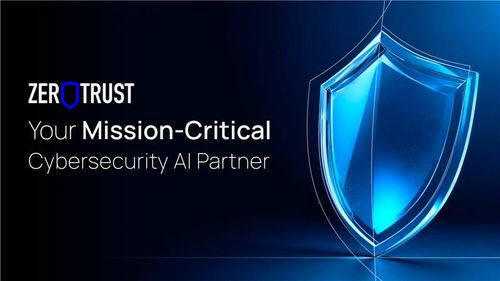In this increasingly complex era, the security of digital platforms such as websites, software, and mobile applications has become a top priority, leading to the emergence of a term known as DevSecOps.
DevSecOps is an approach that integrates development, security, and operations to ensure the security of every stage of the software development lifecycle. This model combines best security practices and frameworks to detect anomalies and prevent threats proactively.
In this article, we will explore the definition of DevSecOps, its flow, process, model, and the benefits of implementing this concept.
What is DevSecOps?
While we often hear the term DevOps (Development Operations), there is another important term to know: DevSecOps.
DevSecOps is an approach that integrates security practices into every phase of the Software Development Life Cycle (SDLC), from initial planning to production.
The acronym DevSecOps stands for 3 main keywords:
- Dev (Development): Software or platform development
- Sec (Security): Platform security
- Ops (Operations): Operations or management
The DevSecOps concept is designed to ensure that every part of the software development lifecycle is secure.
In practice, implementing DevSecOps not only enhances security, but also speeds up application delivery by combining automation and team collaboration.
By integrating security steps into the DevOps process, companies can ensure that every code change is tested for security before deployment.
Why is DevSecOps Important for Companies?
In today's digital era, the interest in DevSecOps among companies in Indonesia is growing as awareness increases regarding the importance of reliability and security in product development processes.
However, it's undeniable that many companies have yet to fully adopt DevSecOps practices due to various factors.
Yet, DevSecOps plays a crucial role in enhancing traditional DevOps practices in at least 3 key areas: Process Efficiency, System Security, and Team Collaboration.
Process Efficiency is achieved through DevSecOps by bridging the various stages within the SDLC, offering streamlined methodologies like frameworks or other development approaches. For example, utilizing Continuous Integration & Continuous Delivery (CI/CD Pipelines).
Furthermore, System Security in DevSecOps is ensured from the outset, especially as cyberattack threats continue to rise.
Cyberattacks can lead to significant financial losses, reputation damage, and even disruption of business operations. Therefore, DevSecOps emerges as a proactive solution to counter these threats more effectively.
Finally, DevSecOps fosters more productive Team Collaboration, where teams work together to create a product that is not only reliable in terms of performance but also secure and continuously operable.
Benefits of DevSecOps in Product Development
DevSecOps provides numerous benefits for companies looking to enhance the security of their applications while developing and operating their platforms.
Some benefits of adopting DevSecOps include:
- Enhanced Security
By integrating security from the start, vulnerabilities can be identified and addressed more quickly. - Increased Efficiency
Automating security processes can reduce the time and cost needed to identify and fix issues. - Improved Product Quality
Products developed with the DevSecOps approach are more stable and high-quality. - Enhanced Collaboration & Innovation
DevSecOps encourages innovation through collaboration between development, security, and operations teams.
DevSecOps Models, Flow, and Frameworks
Diving deeper into DevSecOps, you will find several models, flows, and frameworks, such as:
A. Key Components in the DevSecOps Model
The DevSecOps Model consists of some key components:
- People
Teams composed of developers, security engineers, and operations teams. - Process
The development process includes planning, development, testing, and deployment. - Technology
A set of tools and technologies to support the DevSecOps process.
B. DevSecOps Flow
The DevSecOps process flow generally includes the following stages:
- Planning
Identify security needs and integrate them into project planning. - Development
Implement security practices in the code. - Testing
Automate and manually conduct security testing. - Deployment
Deploy applications to the production environment. - Monitoring
Continuously monitor to detect threats.
C. DevSecOps Principles & Frameworks
To provide a clearer picture of this practice, here are some key DevSecOps Principles commonly applied in software development processes:
1. Holistic Automation
This principle emphasizes automation throughout the entire SDLC, including development, testing, security, and operations, ensuring that every step—from code writing to deployment in production environments—is executed efficiently and consistently.
2. Shift Left Security
This principle involves integrating security measures early in the SDLC by shifting them left, making security a proactive part of the development process rather than a last-minute addition.
3. Compliance and Governance
This principle integrates compliance and governance into the DevSecOps pipeline to ensure software meets performance, security, and regulatory standards.
4. Continuous Improvement
This principle consistently monitors and assesses the effectiveness of the DevSecOps pipeline, making necessary adjustments to enhance efficiency, security, and product quality.
5. Collaboration, Communication, and Shared Responsibility
DevSecOps fosters a culture of collaboration and communication, where development, security, and operations teams share security and reliability responsibilities.
In addition to these 5 key points, DevSecOps also encompasses other principles such as Continuous Security Testing, Threat Modeling and Risk Assessment, Security as Code, Immutable Infrastructure, and more.
When diving deeper into the security aspects, some DevSecOps frameworks frequently encountered include:
- National Institute of Standards and Technology (NIST)
- Open Web Application Security Project Security Assurance Maturity Model (OWASP SAMM)
- Building Security In Maturity Model (BSIMM)
- Cloud Security Alliance (CSA) & Cloud Controls Matrix (CCM)
- SysAdmin, Audit, Network, and Security (SANS)
D. DevSecOps Tools and Technology Integrations
To support the implementation of DevSecOps, it's essential to integrate various tools and technologies, whether they are free DevSecOps tools or premium/paid ones, such as:
- Jenkins
A versatile automation server used continuously to build and test software under development. - Git
A tool that serves as a version control system, enabling teams to collaborate and track code changes quickly and efficiently. - Docker
A tool used to package, ship, and run applications within containers, ensuring they run consistently across different development environments. - Application Security Testing Tools
These tools are used to identify vulnerabilities in application source code, both statically and dynamically. Examples include Static Application Security Testing (SAST), Dynamic Application Security Testing (DAST), and Interactive Application Security Testing (IAST). - Software Composition Analysis (SCA)
A tool used to identify vulnerabilities in third-party components. - OWASP ZAP - Zed Attack Proxy
A tool employed for penetration testing of web applications, identifying potential security weaknesses within the application.
DevSecOps Best Practices
Best practices for DevSecOps aim to integrate security into every software development lifecycle (SDLC) phase to identify and address system vulnerabilities early.
Here are some best practices you can apply when starting to implement the DevSecOps concept:
1. Automate Security
Automation is key in DevSecOps practices, automating security tasks such as:
- System Vulnerability Scanning
Automatically identify code, configuration, and infrastructure vulnerabilities. - System Security Testing
Security testing is automatically conducted as part of the CI/CD pipeline. - Performance Reporting
Automatically generate security reports for easier analysis.
Automation helps save company time and resources while increasing efficiency in the development process.
2. Effective Team Collaboration
Good collaboration between development, security, and operations teams is crucial in DevSecOps practices. Ways to create and enhance collaboration include:
- Forming Cross-Functional Teams
Create teams with members from various disciplines to collaborate on projects. - Improving Individual Communication
Use effective communication tools to facilitate information exchange. - Team Training and Education
Provide training for all team members on security concepts and DevSecOps practices.
3. Continuous Improvement
DevSecOps is an ever-evolving and ongoing process. To continuously improve security in development and operations, you need to:
- Monitoring and Evaluation
Continuously monitor security performance and evaluate the step's effectiveness. - Feedback Collection
Collect feedback from the team and users to continuously improve processes. - Adoption of New Technologies and Methods
Adopt the latest security technologies to address evolving threats.
4. Early Security Planning
When developing any digital platform, start thinking comprehensively, including about security in the development cycle. Here are some steps you can take:
- Threat Modeling
Identify and analyze potential threats to the application. - Secure by Design
Design applications with security in mind from the outset. - Secure Coding Practices
Train developers to write secure code.
5. Education and Training
Invest time and resources into training all team members on the importance of security and DevSecOps practices. This will help increase security awareness and encourage active participation in security efforts.
6. Use the Right DevSecOps Tools
The next best practice is to choose the most appropriate tools to support DevSecOps implementation. As discussed earlier, some tools that can be used include Docker, Git, SAST, DAST, IAST, or SCA.
7. Cultivate Security
The final DevSecOps practice is to start building a solid security culture within the company, both in platform development processes and related areas.
Try to involve all team members in security efforts and reward their contributions.
For example, an e-commerce company wanting to enhance security on their application and website could implement DevSecOps by:
- Automation
Using SAST and DAST tools to scan for vulnerabilities with every code change. - Collaboration
Forming an application security team composed of developers, testers, and security engineers. - Continuous Improvement
Regularly reviewing security measures and updating security policies as needed. - Education
Training all developers on secure coding practices.
By implementing these best practices, the e-commerce company can reduce the risk of cyberattacks and protect customer data.
DevSecOps Strategy Consultation with SALT
Responding to the global industry's need for DevSecOps best practices, SALT offers DevSecOps Strategy Consultation services, especially in Indonesia, to help companies implement more effective security systems.
The right DevSecOps strategy from SALT can create an essential approach to integrating security at every stage of software development, focusing on three main components: "People, Process, Technology."
By understanding and applying DevSecOps processes, frameworks, and models, companies can enhance security while streamlining their business operations to achieve sustainable business goals.
Questions about DevSecOps
a. What is DevSecOps Vulnerability Management?
DevSecOps Vulnerability Management involves identifying, assessing, and mitigating security vulnerabilities throughout the software development lifecycle.
b. How to Build a DevSecOps Framework?
Building a DevSecOps framework includes setting security policies, selecting the right tools, and training teams to follow DevSecOps practices.
c. What is the Difference Between DevOps and DevSecOps?
The difference between DevOps and DevSecOps lies in their practices. DevOps focuses on the collaboration of two main elements, "Development" and "Operations," while DevSecOps adds the "Security" element into the collaboration as a whole.
Key Takeaways
Ultimately, implementing DevSecOps can help companies maintain the security of their digital platforms from the initial development stages to operations. By integrating security into every development step, companies can reduce the risks and costs associated with security issues.
Integrating DevSecOps into a company's business processes is not just about improving security but also about sustainably enhancing collaboration and operational efficiency.
As a solution, SALT's DevSecOps Strategy Consultation service can help you understand and implement the best practices of this concept within your organization.
As a Digital Transformation Consultant, SALT can be your company's strategic partner in realizing this new way of working using DevSecOps to achieve your business goals.
Let's explore SALT's various services and start your transformation journey with us by clicking the banner below!





